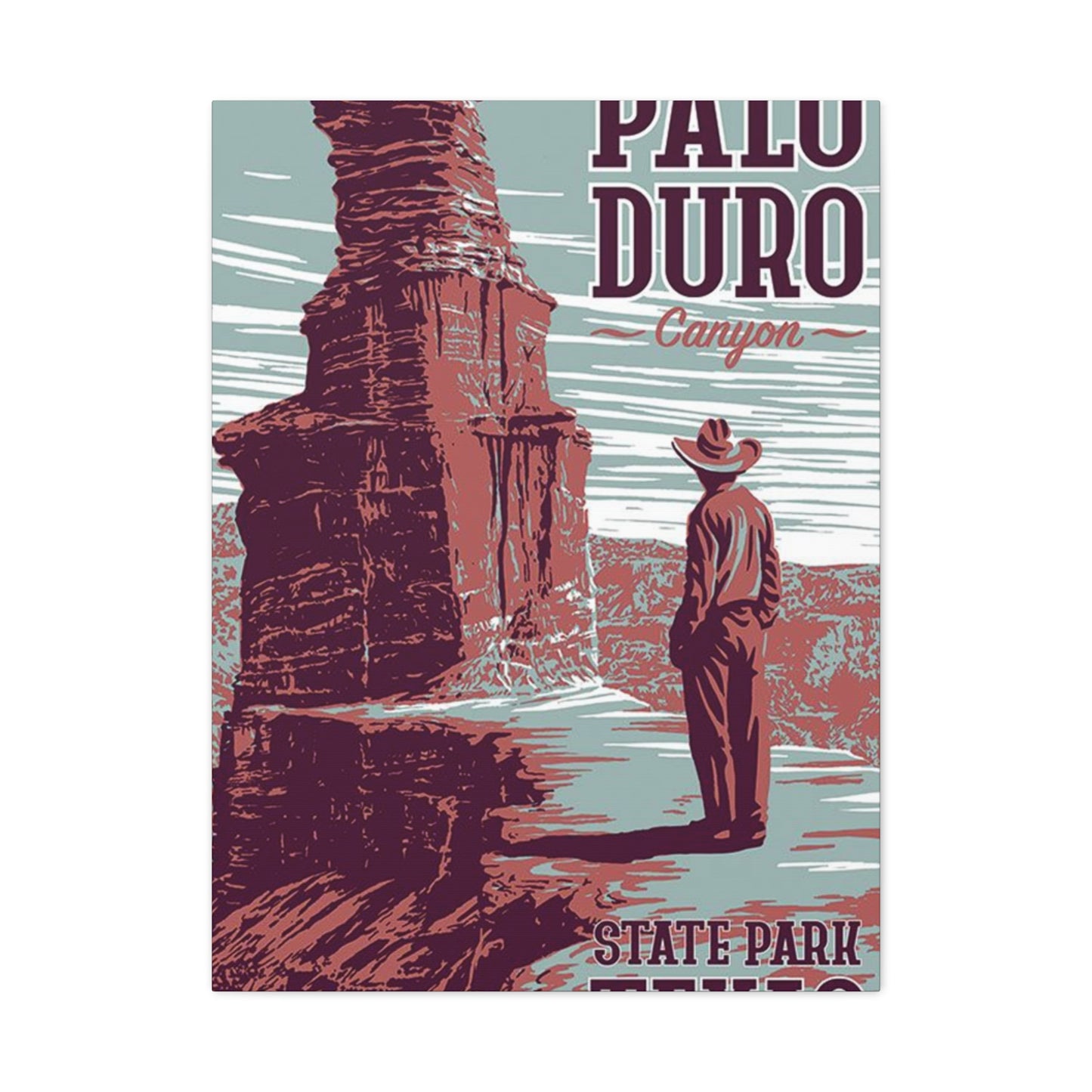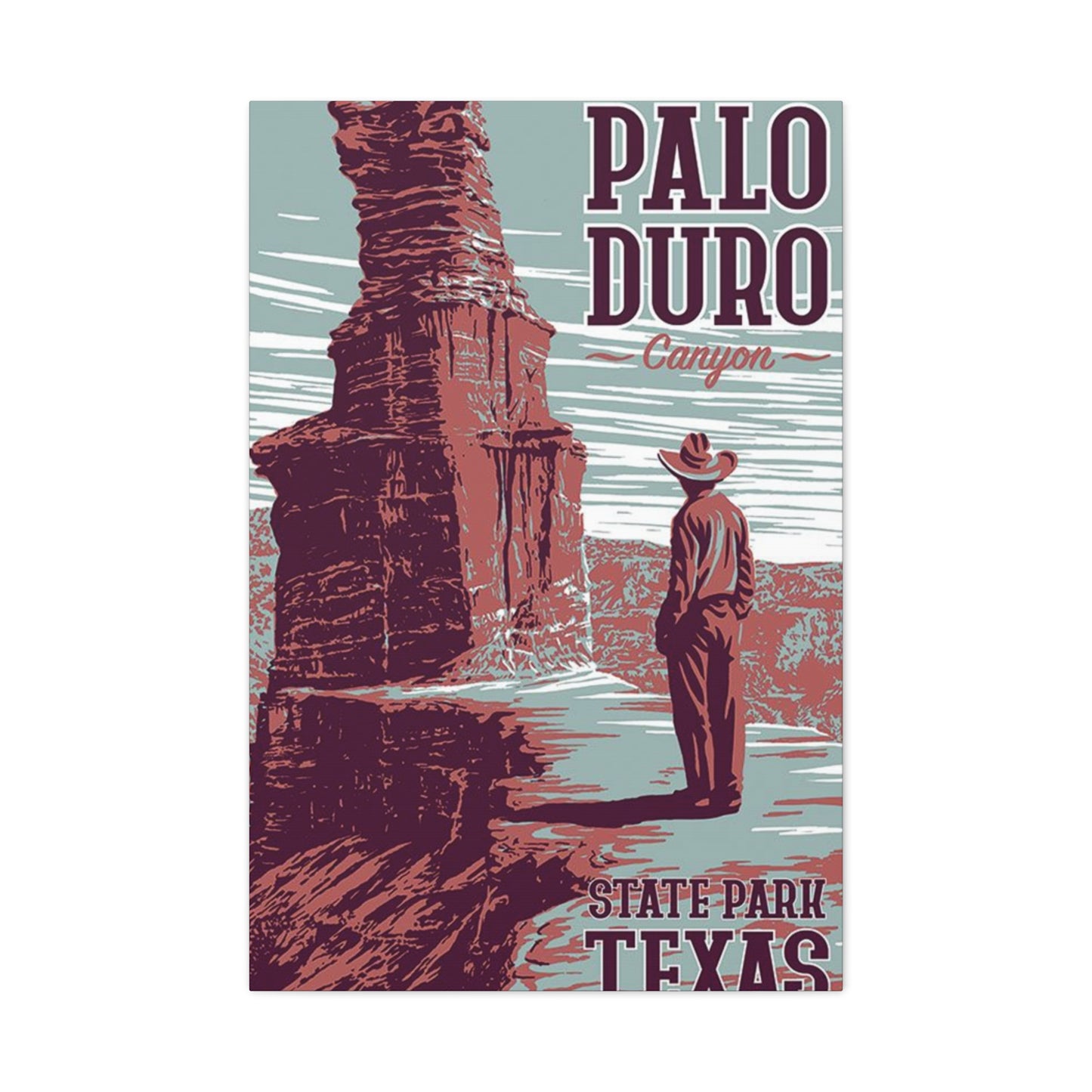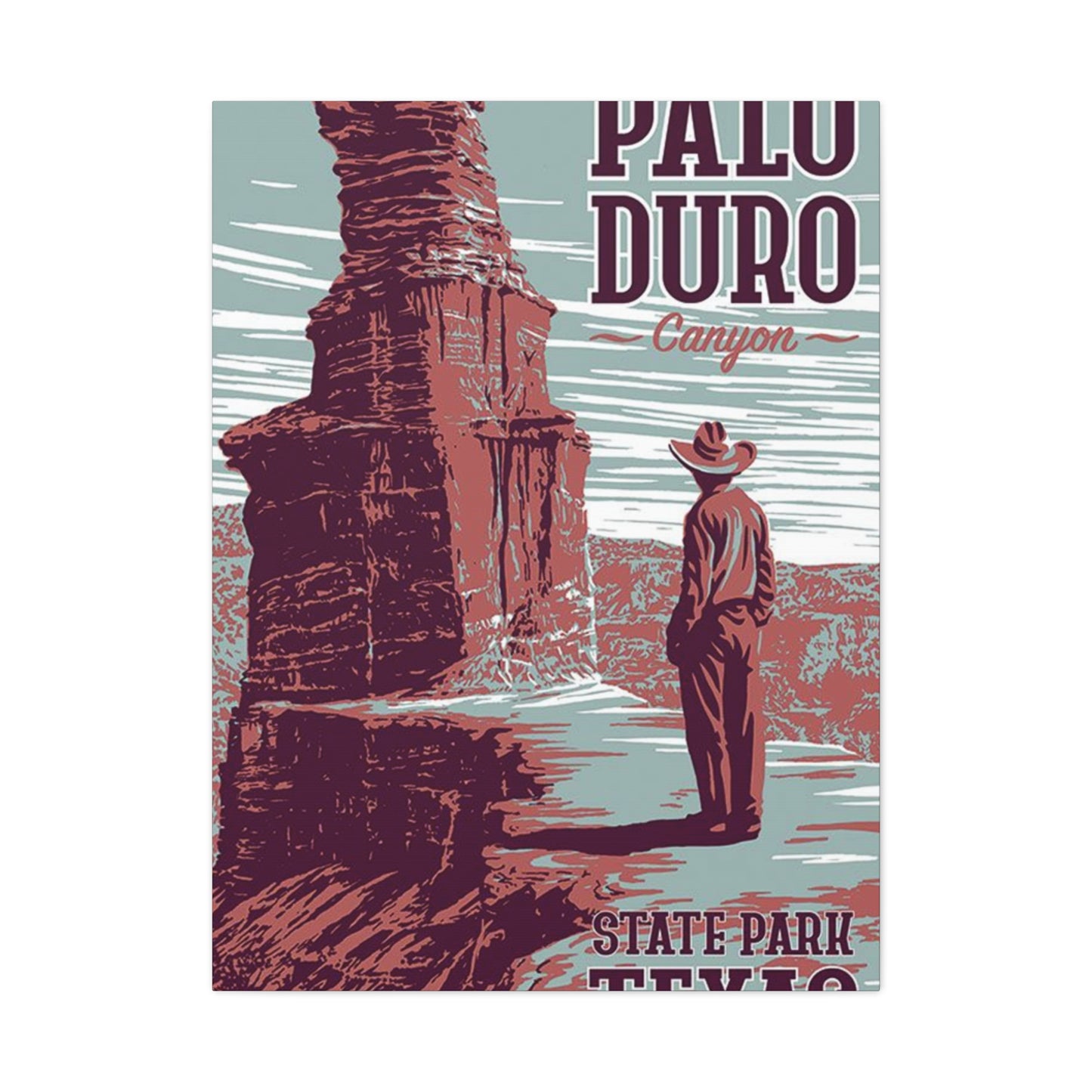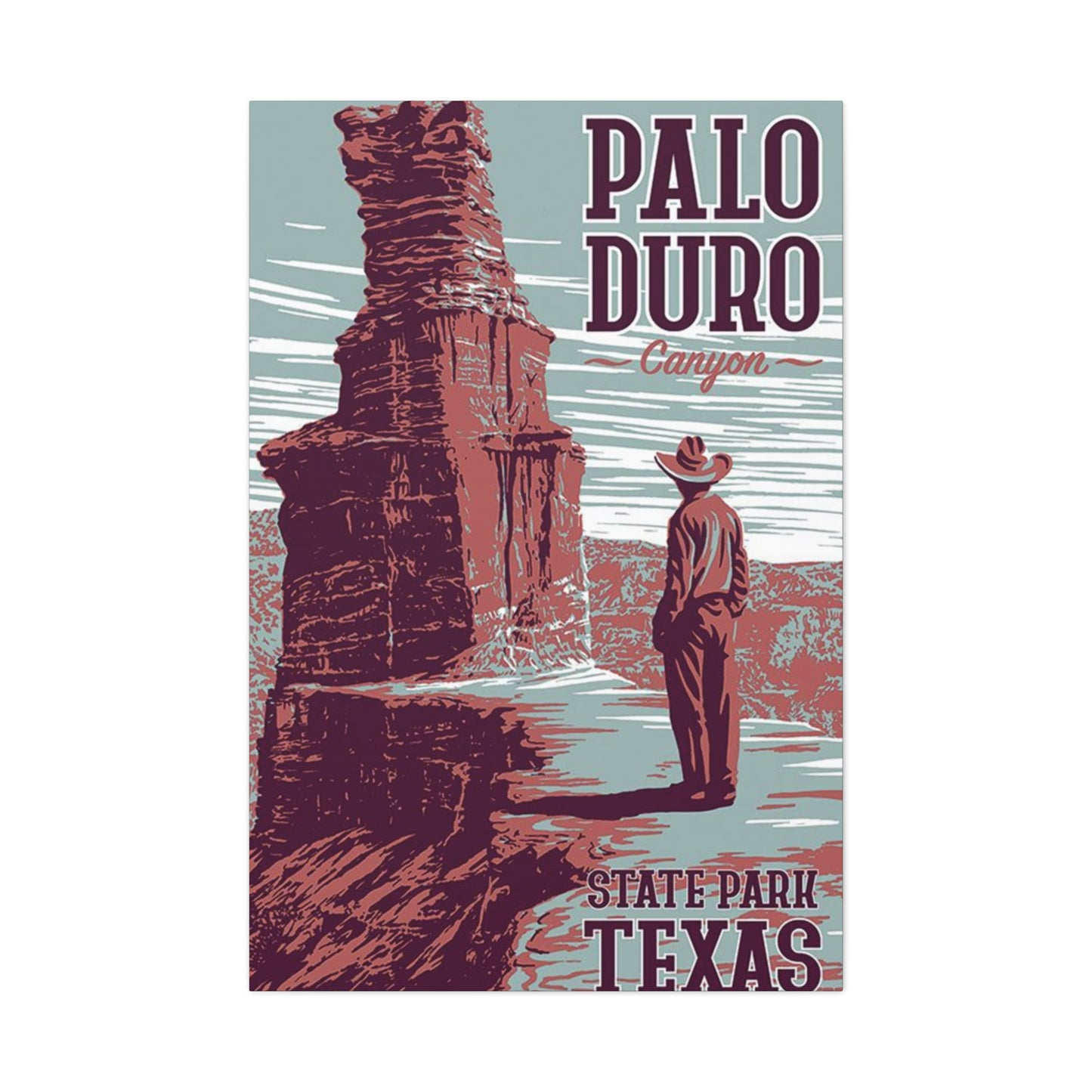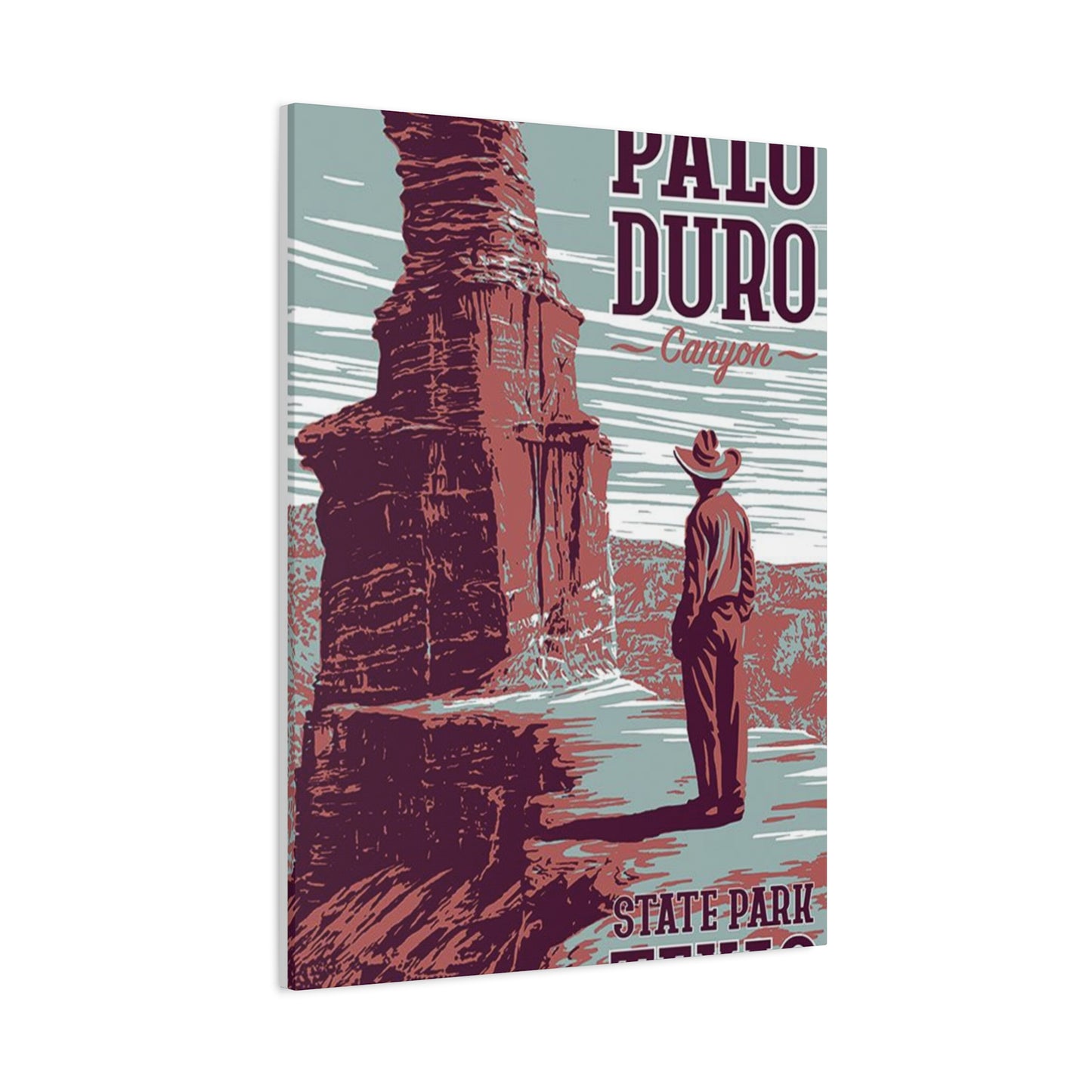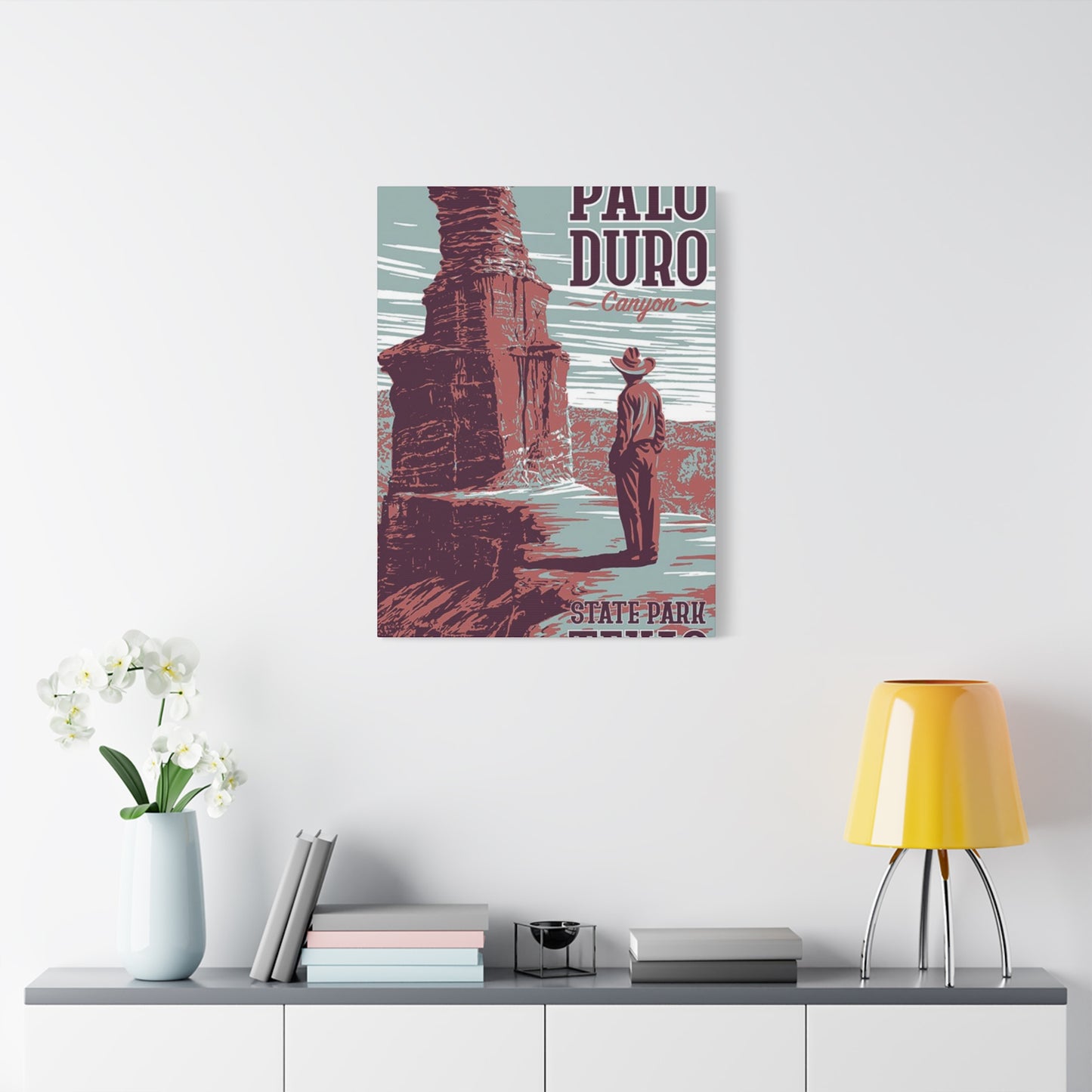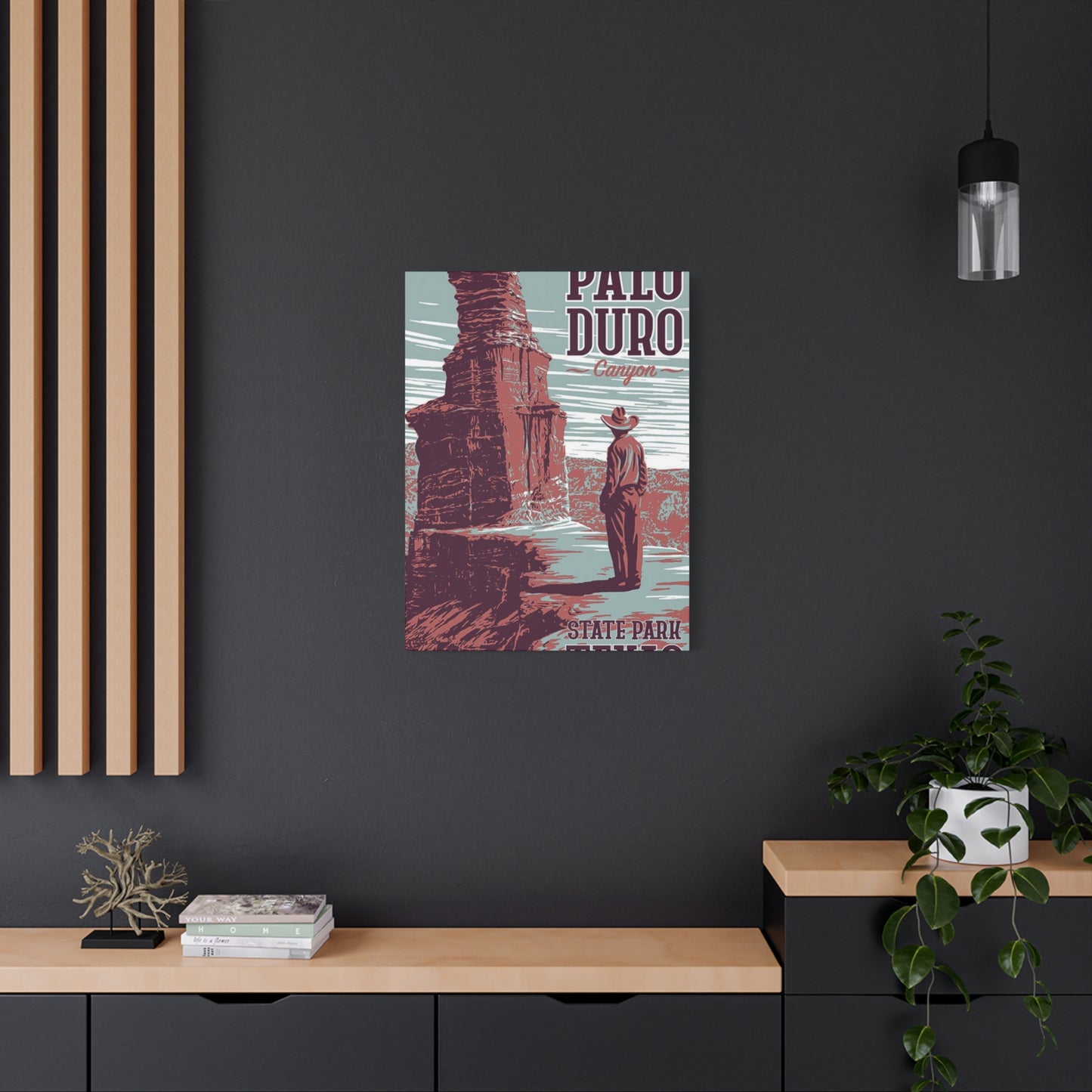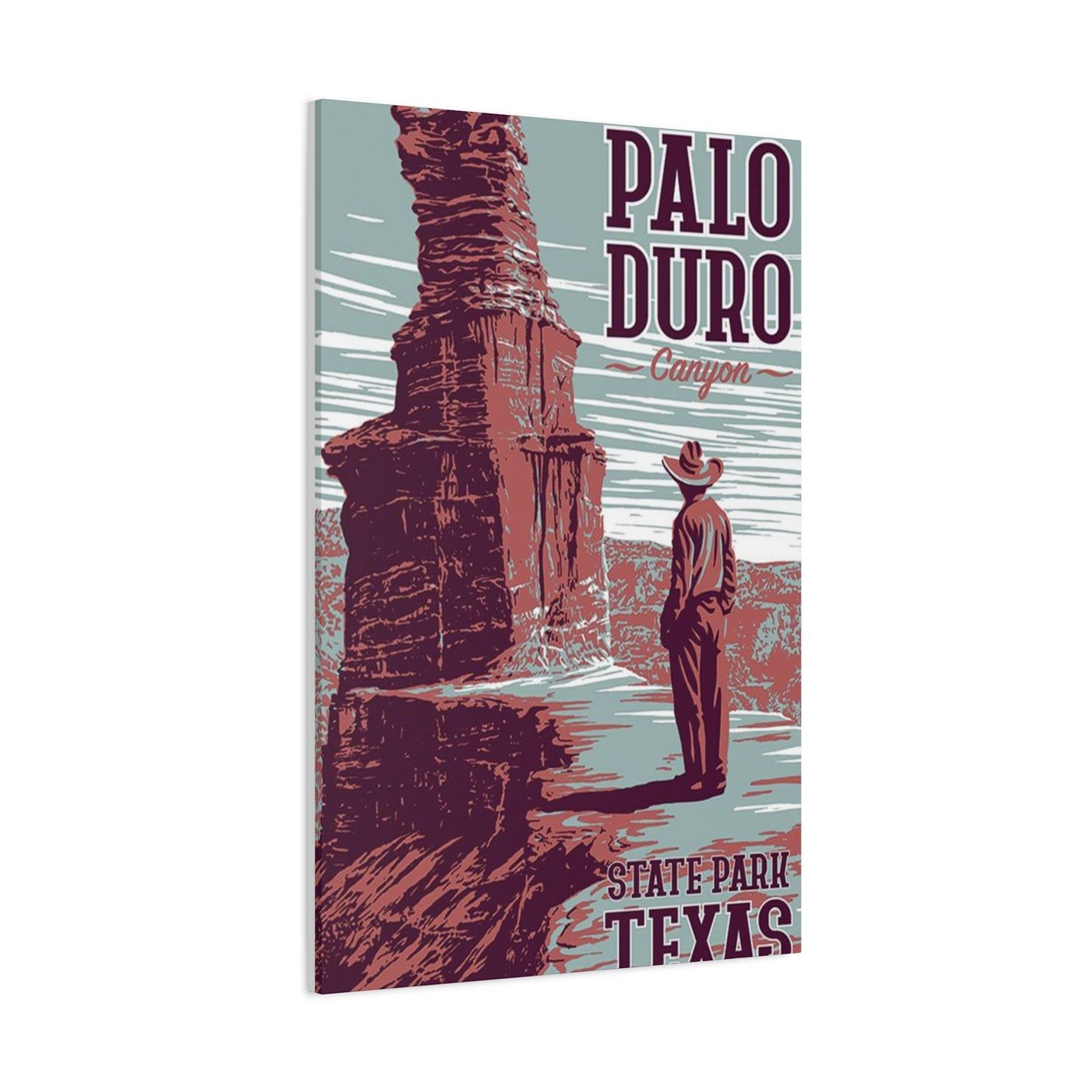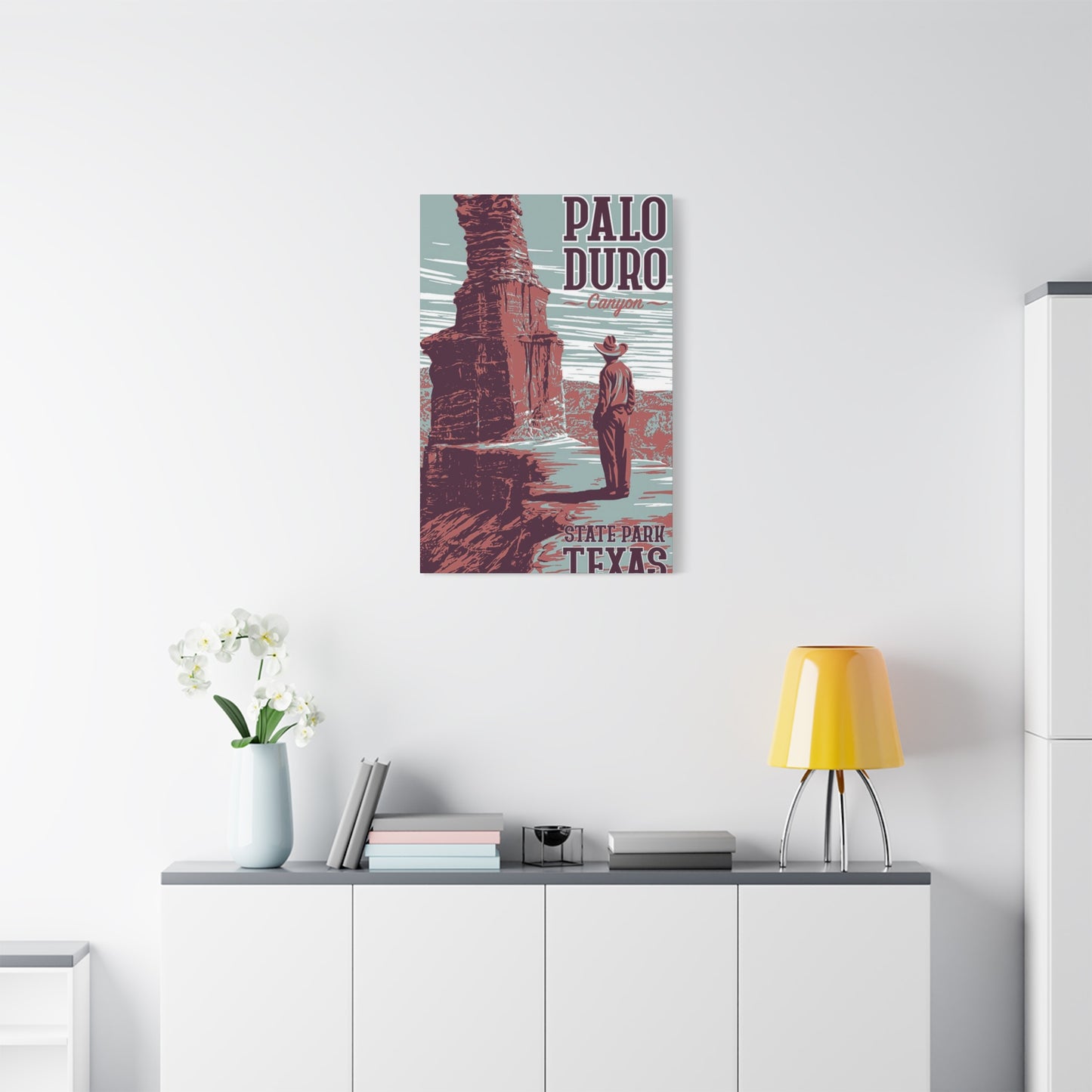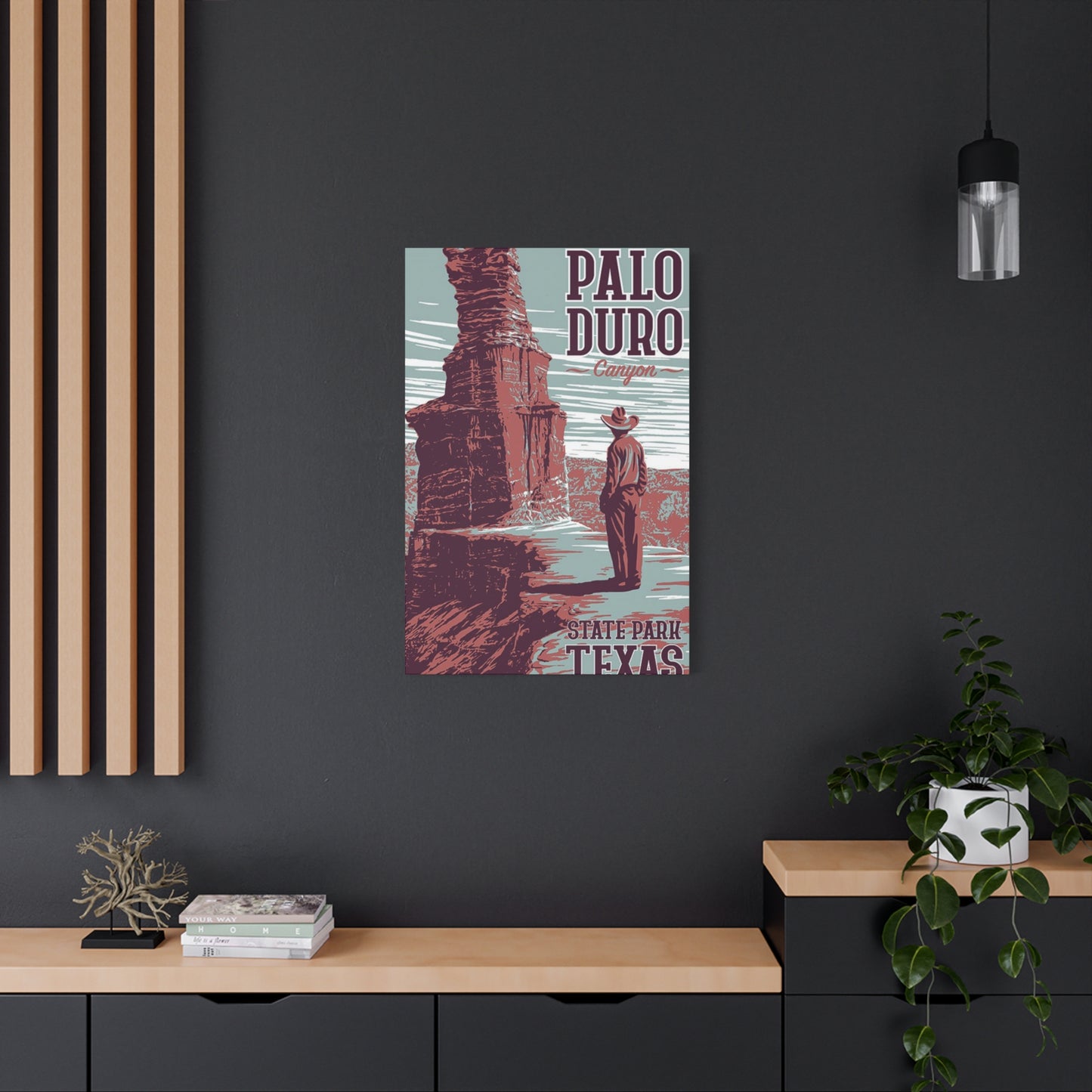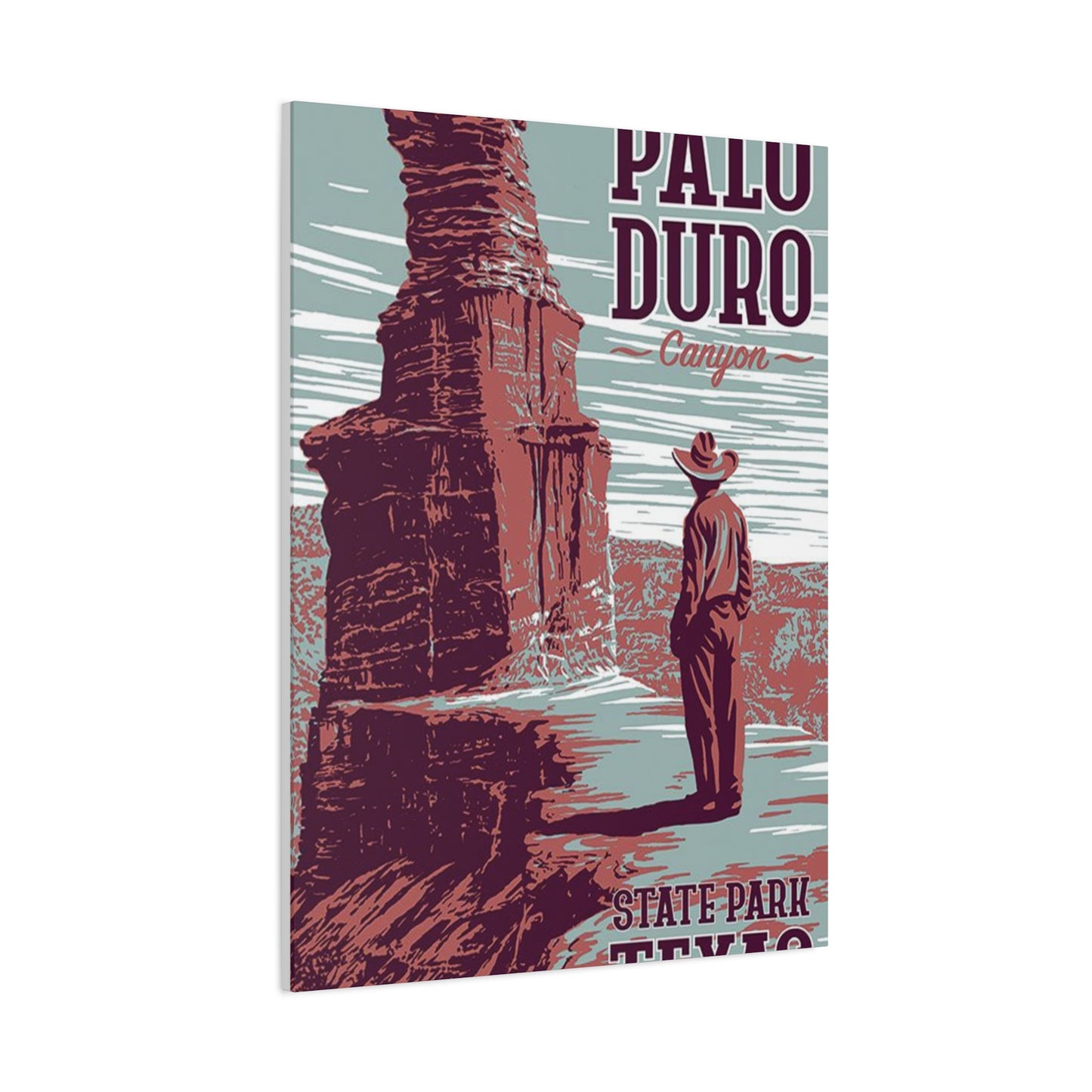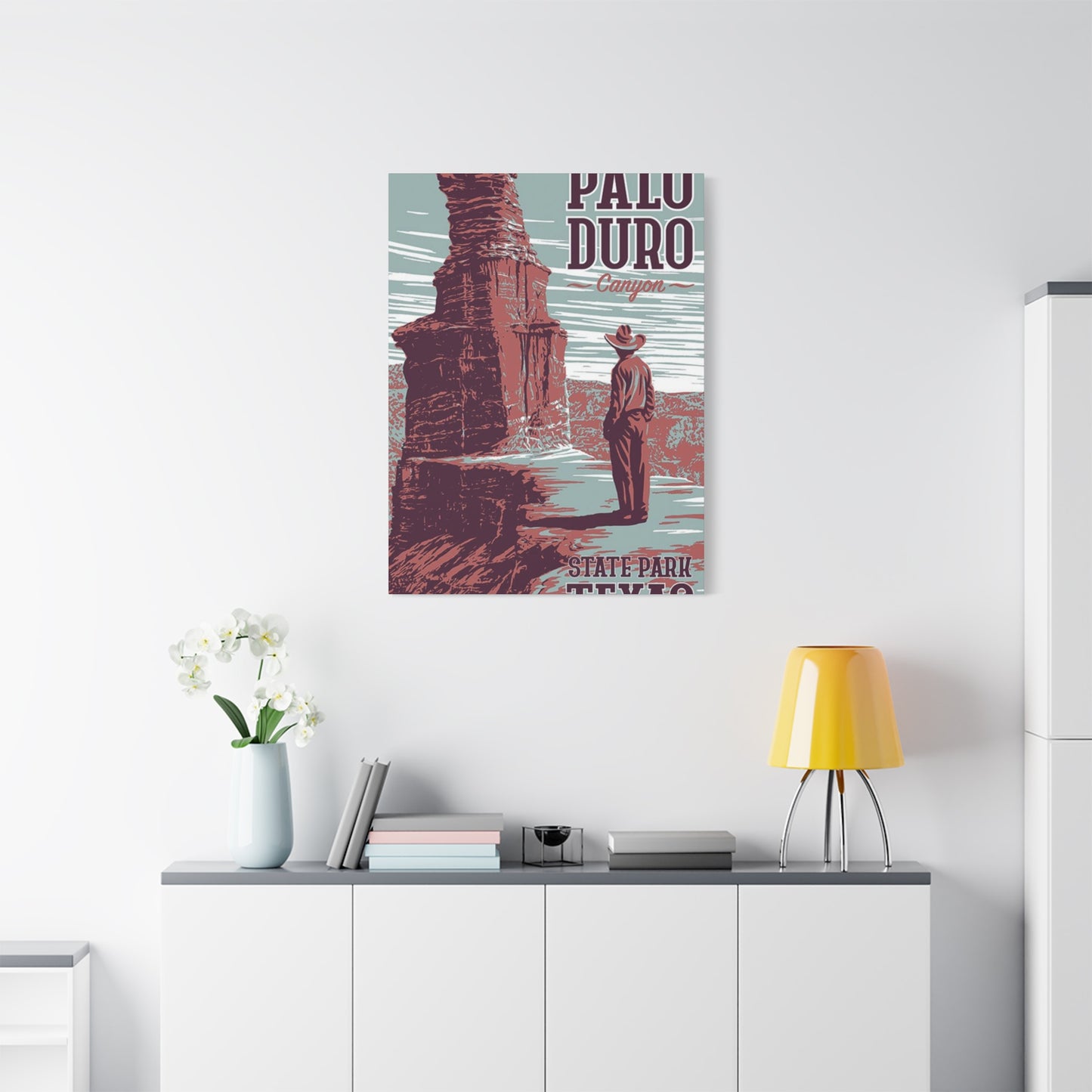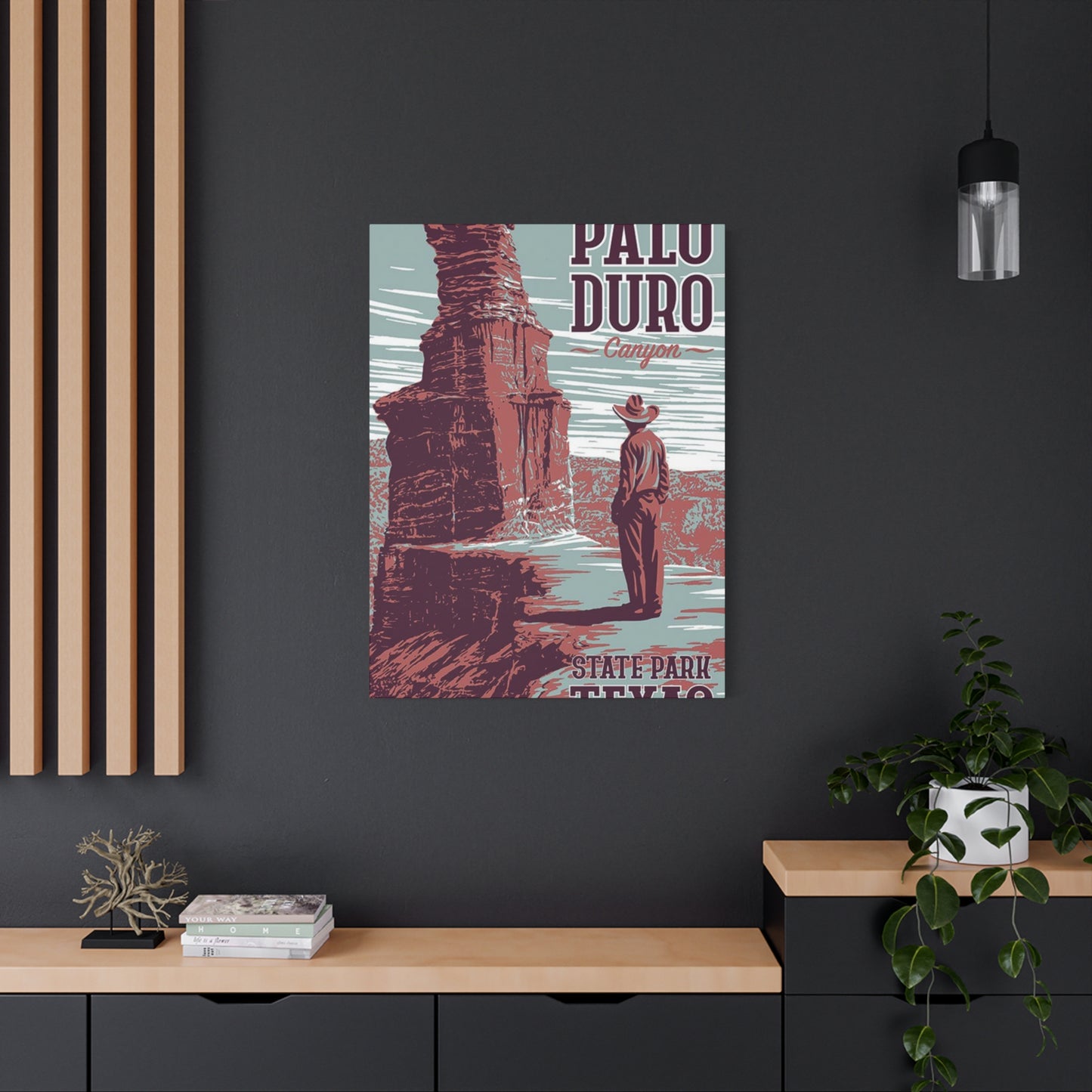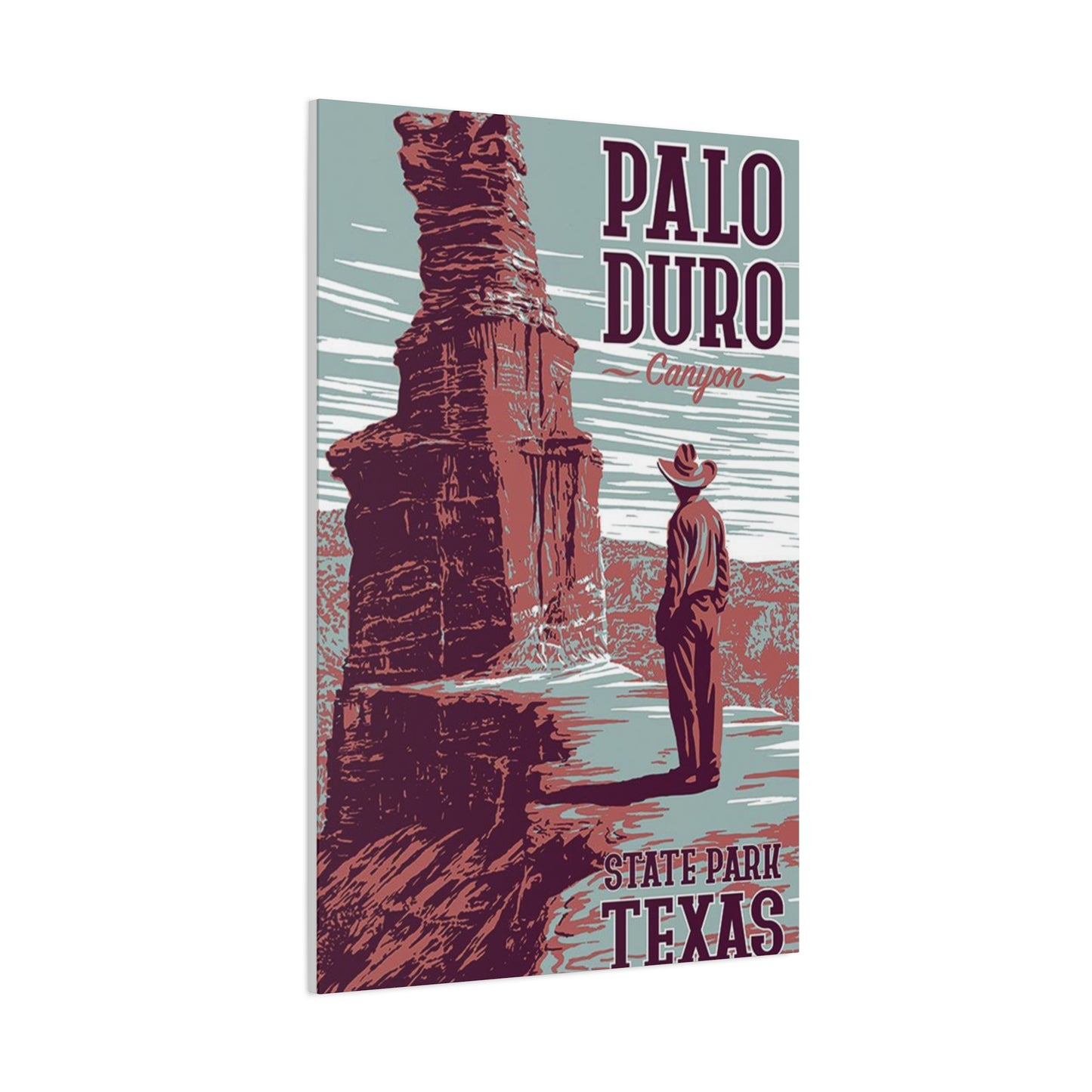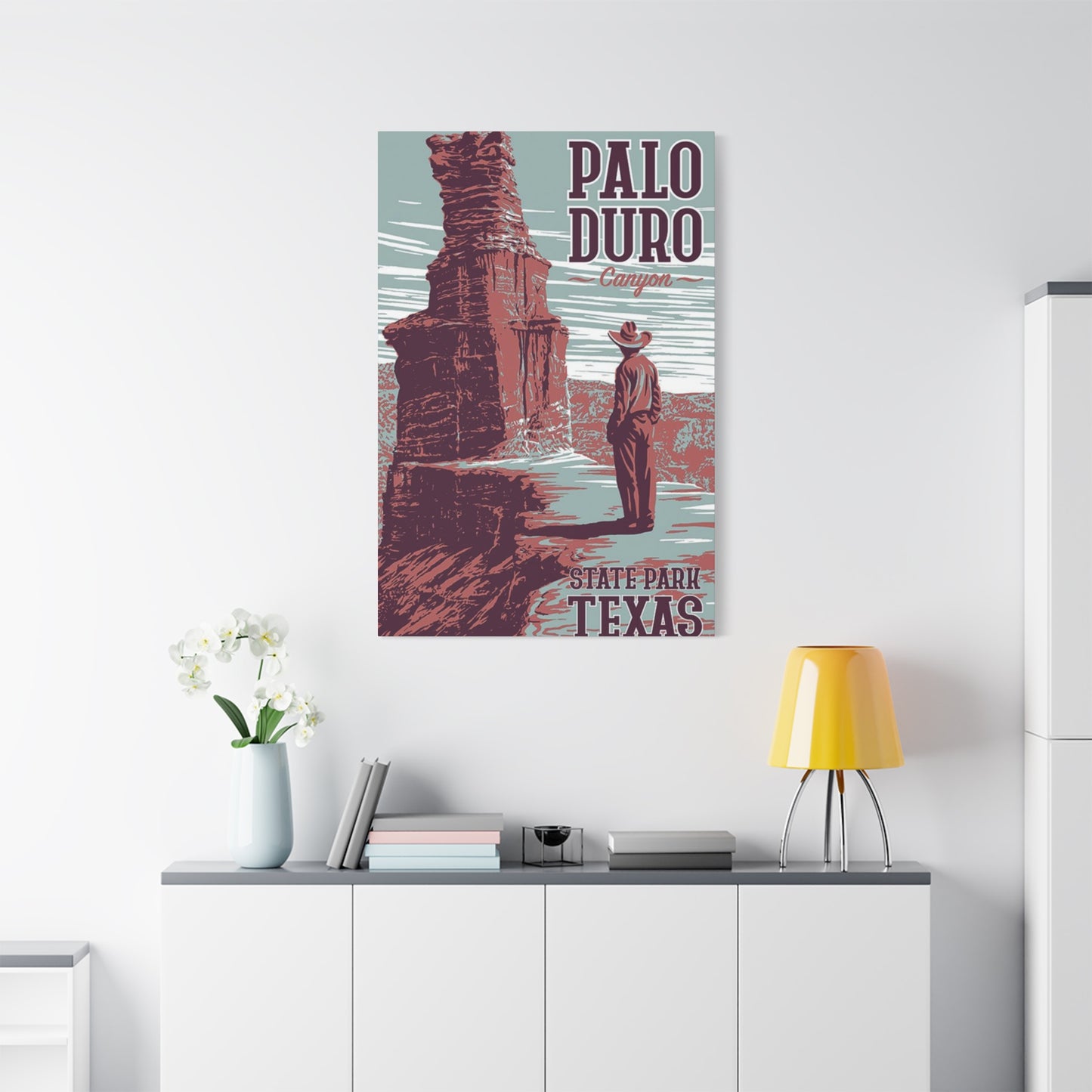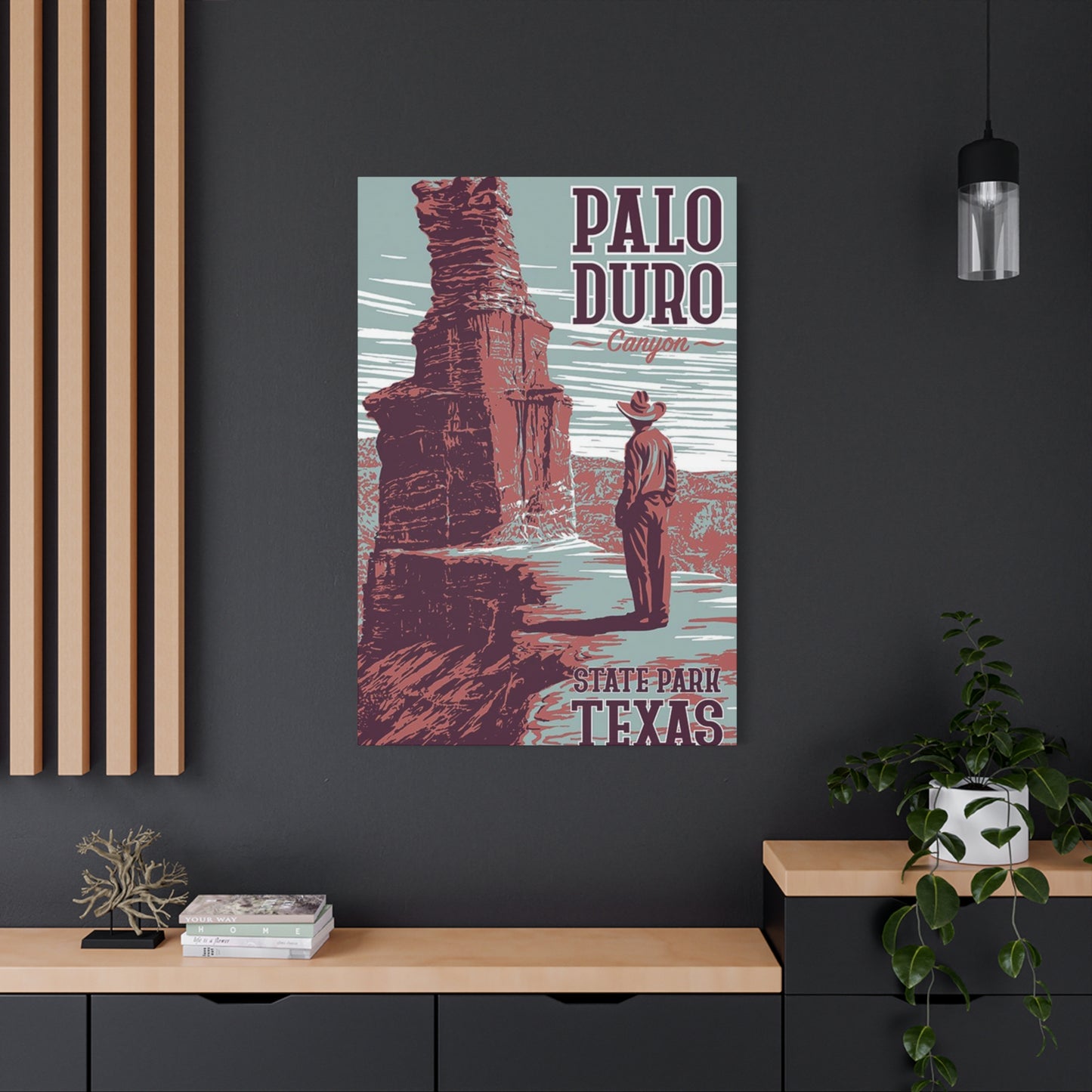The Complete Guide to Palo Duro Canyon Wall Art: Transforming Interiors with Nature’s Majestic Beauty
The majestic landscapes of Texas hold secrets that many homeowners and interior design enthusiasts are discovering through artistic representations. When you bring the grandeur of natural rock formations, sweeping vistas, and rich earth tones into your living space, you create an atmosphere that resonates with both adventure and tranquility. The second largest canyon in the United States offers visual narratives that translate beautifully into home decor, providing endless possibilities for transforming ordinary walls into extraordinary focal points.
Decorating with canyon-inspired artwork goes beyond simply hanging pictures on walls. It represents a connection to the raw beauty of nature, the spirit of exploration, and the timeless appeal of geological wonders. Whether you reside in an urban apartment seeking natural elements or a suburban home embracing regional character, incorporating these landscape pieces can dramatically alter the ambiance of any room. The diverse color palettes found in canyon formations range from deep russets and burnt oranges to soft beiges and dramatic shadows, offering versatility that complements various design schemes.
The growing popularity of nature-inspired interior design has made canyon landscape artwork an increasingly sought-after choice for homeowners, decorators, and art collectors alike. This comprehensive guide explores every aspect of incorporating these stunning visual pieces into your home, from selecting the perfect print to styling techniques that maximize their impact. You will discover how different formats, sizes, and placements can transform your living spaces while learning practical tips for creating cohesive design narratives that celebrate the beauty of one of America's most spectacular natural landmarks.
Stunning Palo Duro Canyon Wall Art
The visual impact of canyon landscape artwork stems from its ability to capture nature's raw power and delicate beauty simultaneously. These artistic representations showcase the dramatic geological formations that have been carved over millennia, displaying layers of sedimentary rock in colors that shift from warm terracotta to cool gray depending on the light and perspective. When you select a piece featuring these dramatic vistas, you introduce a sense of scale and grandeur that few other subjects can match.
High-quality canyon prints capture the intricate details that make these formations so captivating. The striated rock layers tell stories of ancient seas, volcanic activity, and erosion patterns that span millions of years. Photographers and artists who specialize in landscape work understand how to frame these natural sculptures in ways that emphasize their monumentality while also highlighting the subtle textures and color variations that make each formation unique. The interplay of light and shadow across canyon walls creates dynamic compositions that change throughout the day, and skilled artists capture these fleeting moments in ways that bring constant visual interest to your walls.
The emotional response these pieces evoke cannot be understated. Canyon artwork often inspires feelings of adventure, freedom, and connection to something larger than ourselves. When visitors enter a room featuring such imagery, they immediately sense the intentionality behind the design choice. These pieces serve as conversation starters, prompting discussions about travel experiences, geological wonders, and the importance of preserving natural landscapes. Unlike generic artwork, canyon prints carry cultural and geographical significance that adds depth to your decorating choices.
Scale plays a crucial role in the effectiveness of canyon artwork. Large-format pieces create immersive experiences that transport viewers into the landscape itself. When properly sized for the wall space, these prints can make small rooms feel more expansive by drawing the eye into the distant horizons depicted in the image. Conversely, smaller prints work beautifully in gallery wall arrangements or as complementary pieces that support larger decorating themes. The key is selecting sizes that balance with your existing furniture and architectural elements rather than overwhelming or disappearing into the space.
Color accuracy matters tremendously when selecting canyon artwork. The natural palette of these formations includes burnt sienna, terracotta, ochre, cream, charcoal, and sage greens from scattered vegetation. Reproductions should faithfully represent these authentic hues rather than artificially enhancing them. Authentic color representation ensures that your artwork coordinates naturally with earth-tone furnishings, leather accents, wood finishes, and textile choices commonly found in homes seeking warm, inviting atmospheres.
The framing choices you make significantly impact how canyon artwork integrates into your overall design scheme. Natural wood frames in weathered finishes complement the organic subject matter while adding texture that enhances the rustic appeal. Metal frames in bronze, copper, or black powder-coated finishes offer contemporary contrast that works well in modern or industrial spaces. Frameless presentations create clean, minimalist aesthetics that let the imagery speak for itself without competing visual elements. Consider the existing finishes in your room when selecting frame materials to ensure cohesive integration.
Lighting considerations can make or break the presentation of canyon artwork. Natural light that changes throughout the day adds dimension to the piece, highlighting different aspects as shadows shift. However, direct sunlight can cause fading over time, so positioning artwork away from harsh rays protects your investment. Artificial lighting options include picture lights that mount directly above the frame, track lighting that can be adjusted to eliminate glare, and ambient room lighting that illuminates the piece without creating hot spots. The goal is to ensure visibility while preserving the artwork's longevity.
Capture the Canyon: Palo Duro Prints
Photographic prints capturing canyon landscapes represent some of the most sought-after nature imagery in contemporary home decor. These reproductions allow homeowners to possess pieces of places they may have visited or aspire to explore, creating personal connections that generic artwork cannot provide. The market offers extensive selections ranging from professional photography reproductions to artistic interpretations, each bringing unique qualities to residential and commercial spaces.
The technical quality of photographic prints determines their longevity and visual impact. Archival-quality printing processes use pigment-based inks that resist fading for decades when properly displayed and maintained. Paper choices range from smooth glossy finishes that emphasize color saturation to textured matte surfaces that reduce glare and create softer presentations. Professional-grade prints should include specifications about paper weight, ink type, and expected longevity, giving buyers confidence in their investment. Settling for inferior printing methods results in artwork that deteriorates quickly, losing color accuracy and developing undesirable yellowing or fading.
Limited edition prints offer collectors opportunities to own exclusive pieces with investment potential. Photographers often release their work in numbered series with certificates of authenticity, creating scarcity that enhances value. These editions typically feature superior printing standards, hand-signing by the artist, and specialized packaging that protects the artwork during shipping and storage. While limited editions command higher prices than open editions, they provide unique ownership experiences and potential appreciation over time. For serious collectors, verifying edition numbers and researching artist reputations ensures wise purchasing decisions.
The composition techniques employed in canyon photography significantly impact the emotional resonance of the final print. Leading lines draw viewers into the image, guiding eyes through the landscape and creating depth perception. Rule of thirds placements position key elements at visually pleasing intersections rather than dead center. Foreground interest elements like weathered trees or distinctive rock formations add layers to the composition. Sky treatments range from dramatic cloud formations to clear blue backdrops, each affecting the overall mood. Skilled photographers understand these principles and apply them to create compelling images that transcend simple documentation.
Perspective choices in canyon photography offer diverse visual experiences. Aerial views captured via drone technology provide bird's-eye perspectives that reveal the canyon's full scope and geological patterns. Ground-level shots place viewers within the landscape, creating intimate connections with specific features. Elevated vantage points from canyon rims offer classic panoramic views that showcase the interplay between foreground, middle ground, and distant elements. Close-up detail shots focus on specific textures, colors, and formations that might be overlooked in wider compositions. Your selection should reflect the experience you wish to create for viewers.
Rustic Decor: Palo Duro Canvas
Canvas presentations of canyon landscapes perfectly embody rustic design aesthetics that celebrate natural materials, earthy colors, and handcrafted qualities. The textile surface of canvas adds warmth and texture that paper prints cannot replicate, creating artwork that feels organic and approachable rather than formal and distant. When integrated into spaces featuring reclaimed wood, natural stone, and vintage furnishings, canvas canyon art completes the rustic narrative with visual references to outdoor environments.
The production process for gallery-wrapped canvas creates three-dimensional artwork that eliminates framing requirements. The printed canvas stretches around wooden stretcher bars, with the image continuing around the edges for a finished appearance from all angles. This frameless presentation suits casual, rustic environments where ornate frames would feel out of place. The depth of stretched canvas typically ranges from three-quarters of an inch to two inches, with thicker profiles creating more substantial, sculptural presences on walls. Mounting hardware attached to the back allows easy hanging without visible wires or hooks detracting from the presentation.
Canvas texture variations affect how canyon imagery translates to this medium. Fine weave canvas produces smooth surfaces that preserve image details and work well for photographs requiring clarity. Medium weave offers noticeable texture without obscuring details, creating artistic qualities that suit interpretive imagery. Coarse weave produces heavily textured surfaces best suited for painterly effects or abstract compositions where texture becomes part of the artistic statement. Matching canvas texture to image style ensures the substrate enhances rather than fights with the imagery.
Protective coatings applied to canvas prints significantly impact their durability and maintenance requirements. UV-resistant sprays prevent fading from sunlight exposure, particularly important for pieces displayed near windows. Water-resistant coatings protect against humidity and accidental spills, crucial for bathroom or kitchen installations. Anti-scratch finishes preserve surface integrity in high-traffic areas where contact might occur. While these treatments add cost to production, they extend artwork lifespan substantially, making them worthwhile investments for pieces you intend to display long-term.
Rustic interior design schemes embrace imperfection and authenticity, qualities that canvas presentations naturally embody. Unlike glass-fronted frames that create barriers between viewers and artwork, canvas invites closer inspection and interaction. The soft, matte surface absorbs rather than reflects light, preventing glare issues common with glass. This approachability makes canvas ideal for casual living spaces, family rooms, and bedrooms where comfort and relaxation take precedence over formal presentation. The inherent informality of canvas aligns with rustic design philosophies that prioritize livability over showpiece perfection.
Color saturation on canvas differs from paper prints due to ink absorption into textile fibers. Colors often appear slightly softer and more muted compared to glossy paper prints, creating vintage or weathered aesthetics that enhance rustic design themes. This quality particularly benefits canyon imagery, as the naturally earth-toned palette translates beautifully to the softer presentation canvas provides. If you prefer bolder, more vibrant colors, discuss coating options with printers that can enhance saturation while maintaining the canvas texture you desire.
Nature's Beauty: Palo Duro Wall Art
Natural landscape imagery connects interior spaces to the outdoor world, satisfying deep human needs for nature contact even when physical access is limited. Urban dwellers particularly benefit from bringing nature's beauty indoors through carefully selected artwork that provides visual escapes from concrete and steel environments. Canyon landscapes offer particularly powerful natural imagery, combining geological grandeur with color palettes that soothe and energize simultaneously.
Biophilic design principles recognize that humans possess innate tendencies to seek connections with nature and other forms of life. Incorporating natural imagery into built environments reduces stress, improves cognitive function, and enhances overall well-being. Studies demonstrate that workers in offices featuring nature artwork report greater job satisfaction and productivity compared to those in spaces lacking such elements. Homes decorated with natural imagery create restorative environments where residents recharge after demanding days. Canyon artwork fulfills these biophilic needs while offering aesthetic appeal that justifies its presence on design merit alone.
The diverse ecosystems represented in canyon environments provide rich visual material for artists and photographers. While rock formations dominate compositions, careful observation reveals juniper trees clinging to cliff faces, seasonal wildflowers adding color splashes, birds of prey soaring on thermals, and weather patterns creating dramatic skies. These biological elements remind viewers that canyons are living systems rather than barren wastelands, adding layers of interest beyond geological features. Artwork that captures this ecological complexity offers greater longevity of interest than pieces focusing solely on rocks and sky.
Seasonal changes in canyon appearance create opportunities for rotating artwork collections that keep spaces feeling fresh throughout the year. Summer pieces showcase intense colors under bright sunshine with sparse vegetation in survival mode. Autumn brings enhanced golden tones as grasses cure and occasional deciduous plants change color. Winter can transform canyons with snow and ice creating dramatic contrasts against red rocks. Spring explodes with wildflower blooms and fresh green growth. Collectors who acquire pieces representing different seasons can rotate displays annually, providing decorating refresh without purchasing new items.
The scale of natural features in canyon imagery helps viewers gain perspective on their own concerns and challenges. Standing before a representation of geological formations shaped over millions of years tends to make daily stresses feel more manageable. This psychological benefit complements the aesthetic value, making canyon artwork functional beyond mere decoration. Therapists and medical facilities increasingly incorporate nature imagery into treatment spaces, recognizing its calming effects on anxious or distressed individuals. Your home should provide similar psychological benefits, and thoughtfully selected artwork contributes to creating healing environments.
Wildlife elements occasionally featured in canyon artwork add biological interest to geological subjects. Bighorn sheep navigating steep terrain demonstrate adaptation and survival. Golden eagles perched on high ledges embody freedom and keen vision. Roadrunners sprinting across canyon floors inject humor and motion. Prairie dogs creating communities in the grasslands surrounding canyons show social organization. Including fauna in landscape compositions creates narrative elements that purely geological images lack, giving viewers specific focal points while maintaining the landscape context.
Entryway Accent: Canyon Landscape Prints
First impressions of homes begin in entryways, making these transitional spaces ideal locations for impactful artwork that establishes aesthetic expectations for the entire residence. Canyon landscape prints in entry areas immediately communicate homeowners' appreciation for nature, adventure, and bold design choices. These pieces serve functional purposes beyond decoration, providing focal points that draw attention away from potentially awkward architectural features while creating welcoming atmospheres that invite guests inward.
Sizing artwork for entryway walls requires careful consideration of scale relationships. Entry areas typically feature limited wall space between doors, closets, and openings to adjacent rooms. Oversized pieces overwhelm these compact areas, while tiny prints disappear and fail to make intended impacts. Medium-sized prints measuring between two to three feet generally work well, providing substantial presence without dominating. Vertical orientations often suit narrow wall sections common in entries, though horizontal pieces work where wall width permits. Measuring available space before purchasing prevents expensive mistakes.
Lighting challenges in entryways demand attention when displaying artwork. Many entries lack natural light, relying entirely on artificial sources. Recessed ceiling lights may create uneven illumination with shadowed areas. Wall sconces flanking artwork provide balanced lighting while adding decorative interest. Picture lights mounted above frames ensure consistent illumination regardless of time of day. Motion-activated lighting offers practical benefits in high-traffic areas while ensuring artwork remains visible. Addressing lighting early in the design process prevents disappointing presentations of otherwise excellent artwork.
Color coordination between entry artwork and adjacent spaces creates visual flow throughout homes. If your entryway opens directly into a living room decorated in specific color schemes, selecting canyon prints that share key hues with that space establishes connections between areas. Alternatively, entries can introduce accent colors carried through the home in smaller doses. The earth tones natural to canyon imagery provide neutral foundations that coordinate with most color schemes while adding warmth lacking in stark white or gray palettes dominating contemporary design.
Durability considerations matter more in high-traffic entries than in low-use guest rooms. Frequent door openings create vibrations that can loosen hanging hardware over time. Temperature fluctuations from opening exterior doors affect humidity levels, potentially damaging paper-based artwork. Canvas prints offer greater durability than paper in these challenging conditions. Secure mounting systems using multiple anchor points prevent mishaps. Protective coatings on canvas or acrylic glazing on framed pieces provide insurance against accidents in busy areas where bumps and touches occur regularly.
Thematic consistency between entryway artwork and overall home design creates cohesion that elevates perceived value. If your home embraces rustic, ranch, or southwestern design themes throughout, canyon imagery in the entry telegraphs this commitment immediately. Conversely, using canyon prints as accent pieces in otherwise modern minimalist homes creates eclectic interest through contrast. Neither approach is inherently superior; the key is intentionality. Random artwork selections appear haphazard, while deliberate choices demonstrate design sophistication.
Mirror alternatives represent an innovative use of landscape artwork in entries. While mirrors functionally expand small spaces and provide last-minute appearance checks, they lack personality. Replacing mirrors with compelling landscape prints sacrifices some functionality but gains significant character. This trade-off appeals to homeowners confident in their style who prioritize aesthetic impact over practical conveniences. For those wanting both benefits, pairing smaller mirrors with landscape artwork creates balanced solutions.
Minimalist Palo Duro Canvas Ideas
Minimalist design philosophies emphasize simplicity, functionality, and intentional reduction of elements to their essential forms. Incorporating canyon landscape artwork into minimalist spaces requires careful selection and restraint, as these environments cannot absorb busy compositions or excessive decorative elements. When executed thoughtfully, however, canyon imagery beautifully complements minimalist aesthetics through geometric forms found in rock layers, horizon lines, and stark contrasts inherent to these dramatic landscapes.
Composition choices for minimalist canyon artwork should favor clean lines and uncluttered scenes. Wide-angle panoramas showing expansive sky and distant formations provide openness that minimalist spaces require. Close-up abstractions focusing on specific geological patterns offer visual interest without narrative complexity. Negative space within compositions becomes as important as subject matter, giving eyes places to rest. Horizon lines positioned according to compositional rules create balance without symmetry. These selective approaches prevent visual overwhelm while maintaining the impactful presence minimalist spaces need from their limited decorative elements.
Color palettes in minimalist canyon artwork should be carefully controlled. Monochromatic presentations using only shades of one color create cohesion and calm. Analogous color schemes selecting adjacent hues from the color wheel maintain harmony. Limiting palettes to three or four colors maximum prevents busyness. The natural earth tones in canyon landscapes lend themselves to minimalist application when compositions avoid excessive color variety. Black and white conversions eliminate color concerns entirely while emphasizing form and contrast, often the strongest choice for true minimalist environments.
Scale plays a crucial role in minimalist spaces where fewer elements must work harder. A single large-scale canyon print can anchor an entire wall, providing sufficient visual weight without requiring multiple pieces. The tendency in minimalism toward oversized artwork creates powerful impacts through bold statements rather than accumulated small elements. However, the piece must be exceptional in quality and composition to justify its prominence. Mediocre artwork appears more obviously flawed when given starring roles in minimalist settings compared to traditional spaces where multiple elements share attention.
Frame-free presentations align perfectly with minimalist principles. Gallery-wrapped canvas eliminates framing complexity, reducing the artwork to its pure image. Float mounting creates shadow gaps between artwork and walls, adding dimension without frames. Standoff mounting using hidden hardware achieves similar effects. These approaches prevent frames from competing for attention or introducing ornamental elements contrary to minimalist philosophies. The focus remains entirely on the image itself and its interaction with surrounding space.
Southwestern Style: Canyon Wall Decor
Southwestern design celebrates the cultural heritage and natural beauty of the American Southwest through distinctive color palettes, materials, and decorative motifs. Canyon landscape artwork naturally complements this regional aesthetic, depicting the very landscapes that inspired the design movement. Incorporating these pieces into southwestern-styled homes creates authenticity and strengthens thematic consistency across rooms and architectural elements.
The color palette defining southwestern style aligns perfectly with canyon imagery. Terracotta, adobe, turquoise, sage, sand, and rust dominate both, creating effortless coordination. When selecting canyon artwork for southwestern spaces, prioritize pieces emphasizing these signature colors. Sunset and sunrise shots naturally feature the warm tones central to the style. Images including desert vegetation introduce appropriate greens. The blue skies typical of arid climates provide the turquoise accents that southwestern design relies upon for color contrast and visual relief from warm earth tones.
Cultural authenticity matters when decorating in southwestern style, particularly for those outside the region adopting the aesthetic. Canyon artwork photographs actual southwestern landscapes rather than romanticized interpretations, grounding design choices in geographic reality. This authenticity prevents spaces from feeling like theme park versions of the style. Mixing canyon landscape artwork with genuine Native American textiles, pottery, and crafts creates respectful integration of cultural elements rather than superficial appropriation. The landscape becomes the unifying element connecting various cultural influences present in southwestern design.
Architectural elements common in southwestern style provide perfect contexts for canyon artwork. Wooden vigas and latillas in ceilings create horizontal lines that horizontal landscape prints echo and reinforce. Adobe or stucco walls in warm earth tones provide complementary backgrounds that make artwork colors appear more vibrant. Kiva fireplaces create focal points that benefit from artwork placement on adjacent walls. Saltillo tile floors introduce additional earth tones that canyon images naturally coordinate with. The synergy between architecture and artwork elevates both elements.
Furniture choices in southwestern style create opportunities for thoughtful artwork integration. Heavy wooden pieces in dark finishes provide weight and solidity that balance the horizontal expanse of landscape prints. Leather upholstery in tobacco, saddle, or black colors echoes natural materials while creating visual breaks from textile patterns. Wrought iron elements add vertical lines that contrast with horizontal landscape compositions. The mix of massive furniture and delicate decorative elements characteristic of southwestern style benefits from artwork that bridges these extremes through substantial presence and natural subject matter.
Affordable Palo Duro Art Prints
Budget considerations should never prevent anyone from enjoying quality artwork in their homes. The market offers numerous options for acquiring canyon landscape prints at accessible price points without sacrificing visual impact or acceptable quality standards. Understanding where cost variations originate helps buyers make informed decisions that maximize value while avoiding false economies that result in disappointing products requiring replacement.
Print-on-demand services revolutionized the affordable art market by eliminating inventory costs and allowing direct artist-to-consumer sales. These platforms let photographers and artists upload images that print only when ordered, reducing overhead and lowering prices. Buyers access vast selections from emerging and established artists worldwide. Quality varies across providers, so researching specific companies before ordering ensures satisfactory results. Reading reviews from previous customers reveals information about print quality, color accuracy, shipping protection, and customer service that marketing materials cannot convey.
Open edition prints cost substantially less than limited editions because artificial scarcity does not inflate prices. While lacking investment potential and exclusivity, open editions provide identical visual impact at fractions of limited edition costs. For decorators prioritizing aesthetics over collecting, open editions represent smart choices. The same image that costs hundreds in a limited edition might sell for under fifty dollars as an open edition print. This price difference allows budget-conscious buyers to purchase multiple pieces, creating gallery walls or collections impossible at limited edition pricing.
Size compromises offer another avenue for cost reduction without eliminating desired imagery. Purchasing smaller versions of favorite images costs significantly less than large formats while still providing visual interest. Smaller prints work beautifully in grouped arrangements that create impact through collection rather than individual scale. Bedrooms, bathrooms, offices, and hallways suit smaller prints that cost-conscious buyers can afford in multiples. Reserving larger, more expensive pieces for main living areas while filling secondary spaces with smaller affordable options creates decorated homes within reasonable budgets.
Digital downloads represent the most affordable option for acquiring artwork, though they require self-printing or professional printing services. Many photographers and artists sell high-resolution digital files for personal printing. Buyers download files and take them to local print shops or use online printing services. This approach separates image acquisition from production, allowing buyers to select printing methods and substrates matching their preferences and budgets. However, color management becomes the buyer's responsibility, and results vary based on printer capabilities and operator expertise.
Sales and promotional events provide opportunities for acquiring quality prints at reduced prices. Many online galleries and independent artists offer periodic discounts during holidays or slow sales periods. Email newsletter subscriptions alert subscribers to upcoming promotions. Following favorite artists on social media platforms often provides early access to sales. Black Friday, Cyber Monday, and end-of-year clearances yield significant discounts. Patient shoppers willing to wait for optimal timing can save substantially compared to full-price purchases.
Local artist markets, craft fairs, and art walks offer direct purchasing opportunities that eliminate retailer markups. Meeting artists personally allows discussions about their work, printing methods, and pricing. Many artists at such events offer show specials or negotiate prices, particularly near event closings. Supporting local artists strengthens communities while providing affordable artwork. The personal connection to the artist who captured the image adds intangible value beyond the physical product.
Layered Decor with Canyon Art
Sophisticated interior design employs layering techniques that add depth, interest, and personality to spaces beyond what single elements achieve. Canyon artwork serves as excellent foundation pieces for layered decorating approaches, providing visual anchors around which additional elements accumulate. Mastering layering principles transforms flat, one-dimensional spaces into rich, engaging environments that reveal new details upon repeated viewing.
The concept of layering involves creating foreground, middle ground, and background elements that interact visually while maintaining individual identities. Canyon artwork typically serves as background or middle ground, with three-dimensional objects creating foreground interest. Arranging objects on console tables, mantels, or shelves in front of artwork establishes depth perception. Varying object heights creates dynamic rather than static arrangements. Overlapping elements slightly increases complexity without creating clutter. These principles apply universally across design styles from traditional to contemporary.
Color layering around canyon artwork requires understanding undertones and creating harmonious progressions. The earth tones in canyon images contain warm undertones that additional layers should complement rather than contradict. Terracotta pottery, copper accents, and warm wood tones reinforce these undertones. Textile layers in coordinating colors add softness that contrasts with the artwork's solid presence. Introducing accent colors from the artwork into surrounding elements through throw pillows, blankets, or decorative objects creates intentional color stories that appear coordinated rather than accidental.
Texture layering prevents spaces from feeling flat despite color coordination. Canyon artwork provides visual texture through rock formations and landscape elements. Adding physical texture through woven baskets, nubby throws, smooth ceramics, and rough wood creates tactile variety. Mixing matte and glossy surfaces adds another textural dimension. Natural materials like stone, wood, leather, and metal introduce authentic textures that complement the natural subject matter of the artwork. The interplay between visual and physical textures creates sensory richness that single elements cannot achieve.
Scale variation in layered arrangements prevents monotony while maintaining balance. If your canyon artwork is large, surrounding objects should vary in size rather than matching the artwork's scale. Combining large floor vases with medium decorative bowls and small candles creates pleasing size progressions. Grouping items in odd numbers feels more natural than even-numbered arrangements. The artwork's size influences appropriate scales for surrounding elements, with larger pieces requiring bolder accessories and smaller pieces suiting more delicate supporting casts.
Living Room Accent: Palo Duro Canvas
Living rooms serve as primary gathering spaces where families relax, entertain guests, and spend significant time. Artwork in these central rooms dramatically influences overall ambiance and makes strong statements about homeowner tastes and values. Canyon canvas prints bring natural grandeur into living spaces, creating focal points that anchor furniture arrangements while providing conversation topics and visual interest that elevate everyday living.
Above-sofa placement represents the most common living room artwork location due to large wall expanses typically found there. The canvas should span roughly two-thirds to three-quarters of the sofa width to achieve proper proportions. Hanging height positions the center of the canvas at eye level when standing, typically around sixty inches from the floor. However, in rooms with tall ceilings or large furniture, adjusting slightly higher prevents the artwork from feeling disconnected from seating areas. Secure mounting becomes crucial given the artwork's prominence and the consequences of potential falls in high-traffic areas.
Fireplace walls create natural focal points that benefit from complementary artwork placement. If the fireplace includes a mantel, canvas can hang directly above with the bottom edge clearing the mantel by six to eight inches. Without mantels, determining appropriate height requires judging the visual weight of the fireplace itself. In rooms where fireplaces occupy entire walls, larger canvas pieces balance the architectural presence. Coordinating the artwork's color palette with fireplace materials creates cohesive designs that feel intentional and sophisticated.
Accent wall treatments provide opportunities for dramatic canvas presentations. Walls painted in colors pulled from the canvas create unified compositions where artwork and architecture merge. Textured treatments like shiplap or board and batten add dimension that enhances rather than competes with the canvas. Wallpaper with subtle patterns provides rich backgrounds if the canvas and paper share color families. These treatments require confidence and commitment but produce stunning results that transform living rooms into designer showcases.
Furniture arrangement considerations affect how successfully canvas artwork integrates into living rooms. Seating should orient toward the artwork-adorned wall when possible, allowing enjoyment during normal room use rather than requiring deliberate viewing. However, in multi-purpose spaces where television watching dominates, artwork may occupy secondary walls, which is perfectly acceptable. The key is acknowledging viewing patterns and positioning artwork where it receives attention rather than languishing in neglected corners.
Multiple canvas groupings create gallery wall effects suitable for large living room walls. Three-panel triptychs specifically designed as sets provide cohesive imagery spanning wider areas than single pieces can cover. Alternatively, collecting multiple individual canyon images in complementary styles creates eclectic galleries with personal character. Maintaining consistent canvas depths and frame styles unifies diverse images. Arranging pieces on the floor before hanging allows experimenting with layouts until achieving pleasing compositions.
Lighting design profoundly impacts canvas artwork visibility and dramatic effect in living rooms. Track lighting provides adjustable illumination that accommodates different times of day and occasions. Recessed can lights with adjustable trims direct light precisely. Picture lights mounted directly to frames offer focused illumination independent of room lighting schemes. Combining multiple lighting types and putting them on separate switches allows creating different moods. Evening entertaining benefits from dramatic accent lighting, while daytime gatherings rely more on natural light supplementation.
Vintage Palo Duro Canyon Posters
Vintage aesthetics celebrate designs, colors, and production methods from earlier eras, typically ranging from the 1920s through the 1970s. Canyon landscape imagery interpreted through vintage poster styles creates nostalgic charm while depicting timeless natural subjects. These pieces appeal to collectors of vintage travel posters, retro design enthusiasts, and anyone seeking alternatives to photographic realism in their canyon-themed artwork.
Historical travel poster styles from the golden age of American road trips provide excellent inspiration for vintage canyon artwork. The Works Progress Administration commissioned posters promoting national parks during the 1930s and 1940s using bold colors, simplified forms, and striking compositions. This distinctive aesthetic translates beautifully to canyon subjects through emphasis on geometric rock formations, dramatic skies, and limited color palettes. Reproductions of original vintage travel posters command premium prices, but contemporary artists creating new work in vintage styles offer more affordable options that capture similar aesthetics without reproduction concerns.
Printing techniques available historically create distinctive appearances that contemporary methods can replicate. Screen printing produces flat color areas with visible texture from ink thickness. Letterpress creates subtle impressions in paper surfaces. Lithography generates specific color qualities through stone or metal plate printing. While modern digital printing cannot perfectly recreate these effects, artists using textured papers, limited color palettes, and deliberate imperfections achieve convincing vintage looks. Understanding these historical techniques helps buyers recognize authentic vintage reproductions versus digital prints with applied vintage filters.
Color palettes in vintage poster work differ substantially from contemporary photography's full spectrum approaches. Vintage designers limited themselves to four or five colors for economic and technical reasons. This restraint forced creative problem-solving that produced iconic looks. Canyon posters in vintage styles might use burnt orange, cream, teal, black, and brown exclusively, creating cohesive color stories more striking than full-color alternatives. These limited palettes integrate easily into designed spaces because their restricted color ranges coordinate simply with existing furnishings.
Typography plays crucial roles in vintage poster designs, with hand-lettered titles and descriptive text becoming compositional elements rather than afterthoughts. Bold sans-serif fonts, decorative scripts, and geometric letterforms characteristic of specific eras add historical authenticity. Posters featuring location names, inspirational phrases, or travel-related copy enhance their vintage travel poster resemblance. However, typography should enhance rather than dominate, with imagery remaining the primary focus. Balancing text and image separates successful vintage posters from designs that feel more like advertisements than art.
Distressed or weathered finishes increase vintage authenticity by suggesting age and history. Faded colors, paper discoloration, fold lines, and edge wear create believable aging effects. However, these distressing techniques should appear authentic rather than artificially applied. Subtlety matters enormously; overdone distressing looks fake and detracts from the artwork. Examining actual vintage posters provides reference for authentic aging patterns. Some buyers prefer pristine reproductions of vintage styles without artificial aging, maintaining the design aesthetic while keeping colors crisp and papers clean.
Frame choices significantly impact how vintage canyon posters integrate into spaces. Period-appropriate frames from the era being evoked increase authenticity. Simple wooden frames in natural or painted finishes suit early to mid-twentieth-century aesthetics. Metal frames in brass or chrome reflect mid-century modern sensibilities. Ornate Victorian frames would contradict most vintage poster styles. Matting in neutral colors provides breathing room around images while protecting them from frame contact. Avoiding matting creates more casual presentations suitable for informal spaces like kitchens or family rooms.
Scale expectations differ between vintage posters and contemporary artwork. Historical travel posters measured roughly twenty by thirty inches, smaller than many modern prints. Reproductions maintaining these original dimensions suit vintage aesthetics best. However, scaling up for contemporary wall sizes is acceptable if proportions remain correct. Excessively large reproductions may lose the charm of original-sized pieces. Consider whether size authenticity matters more than filling wall space when making sizing decisions.
Contemporary Canyon Wall Art Designs
Contemporary art embraces current trends, technologies, and cultural movements, distinguishing itself from traditional approaches through innovation and experimentation. Canyon landscapes interpreted through contemporary lenses produce fresh perspectives on familiar subjects. These pieces appeal to design-forward homeowners seeking cutting-edge artwork that pushes boundaries while maintaining connections to natural subjects with universal appeal.
Abstract interpretations of canyon landscapes use color, form, and composition to evoke emotional responses rather than document literal appearances. Artists might isolate specific colors from canyon palettes and apply them in non-representational ways. Geometric abstractions reduce organic formations to angular shapes and planes. Extreme close-ups of rock textures create abstract patterns divorced from recognizable context. These approaches challenge viewers to engage actively with artwork rather than passively consuming pretty landscapes, creating intellectual dimensions beyond aesthetic pleasure.
Mixed media techniques combine photography with painting, collage, or digital manipulation to create hybrid artworks transcending single medium limitations. A photographer might print canyon images on canvas and then apply paint to selected areas, merging captured reality with artistic interpretation. Collage elements introduce textures and patterns from unrelated sources, creating surreal or dreamlike compositions. Digital artists layer multiple canyon photographs with adjustment layers, filters, and graphic elements, producing entirely new images referencing but not replicating reality. These experimental approaches result in unique artworks that command attention through their unconventional presentations.
Minimalist contemporary approaches strip canyon imagery to essential elements, eliminating detail in favor of bold simplicity. High-key treatments wash out mid-tones, leaving only highlights and limited shadow detail. Silhouette compositions reduce three-dimensional landscapes to flat graphic shapes against contrasting backgrounds. Extreme simplification of color palettes limits images to two or three hues maximum. These reductive techniques create powerful visual statements through what they omit rather than what they include, appealing to viewers appreciating economy of expression.
Maximalist contemporary styles embrace complexity, pattern, and abundant detail creating visually dense compositions. HDR photography pushing color saturation and dynamic range to extremes produces hyper-real images more vivid than natural observation allows. Collage works incorporating dozens of individual photographs create kaleidoscopic vistas impossible in single captures. Pattern overlay techniques apply geometric or organic patterns across landscape photography, creating hybrid images that sit between decoration and representation. These approaches suit bold personalities comfortable with visual complexity.
Digital art techniques unique to contemporary practice include 3D rendering, fractal generation, and algorithmic image creation. Artists building three-dimensional canyon models in software can light, texture, and render them with impossible perfection. Fractal mathematics generates organic patterns resembling canyon formations but existing only in digital space. Artificial intelligence systems trained on canyon imagery produce entirely synthetic landscapes that look photographically real despite never existing. These cutting-edge approaches represent the current frontier of landscape art, though some viewers question whether computer-generated imagery carries the same value as traditionally created art.
Scenic Texas Landscape Wall Art
Texas encompasses diverse landscapes from coastal marshes to pine forests, rolling hills to vast prairies, but canyons represent some of the state's most dramatic and photographed terrain. Celebrating Texas geography through landscape artwork connects residents to their home state while introducing visitors to the natural diversity that makes Texas unique. Canyon imagery specifically captures the wild, untamed character that defines Texas identity in both reality and mythology.
State pride runs deep in Texas culture, making locally-sourced artwork particularly meaningful to residents. Displaying images of recognizable Texas landscapes demonstrates connection to place and community. For native Texans living elsewhere, this artwork maintains ties to home. For transplants, it represents adoption of Texas identity and appreciation for their chosen home. The emotional resonance of place-based artwork exceeds that of generic nature imagery from unspecified or distant locations.
The geological story of Texas canyons fascinates both residents and visitors. These formations were carved over millions of years through erosion by water and wind in the caprock escarpment region. The colorful sedimentary layers visible in canyon walls record ancient seas, rivers, and volcanic activity. Fossils embedded in rock layers tell stories of prehistoric life including dinosaurs and extinct mammals. Artwork that clearly displays these geological features appeals to science-minded viewers while remaining visually striking to those unconcerned with geological narratives.
Tourism and economic impacts of Texas canyons benefit from widespread imagery that inspires visits. Seeing compelling artwork often motivates people to experience locations personally. Local businesses near canyon areas benefit from increased visitation driven partly by artistic promotion. Artists who capture and share these landscapes contribute to regional economic development while pursuing their creative practices. This symbiotic relationship between art and tourism strengthens communities while preserving and promoting natural assets.
Native wildlife inhabiting Texas canyon ecosystems adds biological interest to landscape imagery. Roadrunners, golden eagles, rattlesnakes, and jackrabbits represent fauna adapted to harsh canyon conditions. Seasonal residents like migratory birds pass through canyon corridors during annual movements. Artwork incorporating these creatures provides educational value while increasing compositional interest. Wildlife elements humanize vast geological landscapes by adding life and motion to otherwise static scenes.
Plant communities in and around Texas canyons demonstrate remarkable adaptations to extreme conditions. Juniper and mesquite trees find purchase in rocky soils. Prickly pear and cholla cacti store water for dry periods. Yucca plants produce dramatic flower spikes. Seasonal wildflowers explode in color following adequate rainfall. This botanical diversity offers artists varied subject matter beyond rocks and sky. Viewers interested in native plants and xeriscaping find these botanical elements particularly engaging.
Historical and cultural layers in Texas canyon regions add human dimensions to geological subjects. Native American presence in these areas spans thousands of years, with pictographs and artifacts documenting their habitation. Spanish explorers, American military expeditions, and pioneer settlers all passed through or attempted to settle canyon areas. This rich human history provides context for contemporary landscape appreciation, reminding viewers that these have always been meaningful places worthy of documentation and celebration.
Travel-Inspired Palo Duro Wall Decor
Travel experiences shape perspectives, create memories, and inspire personal growth in ways that routine daily life cannot match. Commemorating meaningful travels through thoughtfully selected artwork keeps these experiences alive in daily consciousness. Canyon landscape pieces sourced from specific locations you have visited serve as tangible reminders of adventures undertaken, challenges overcome, and natural beauty witnessed personally.
The psychology of travel mementos explains why location-specific artwork resonates more powerfully than generic decoration. Each time you view a print from a place you have visited, neural pathways activate associated memories including sights, sounds, smells, and emotions from that experience. This mental time travel provides stress relief and happiness boosts as you momentarily escape present concerns and revisit cherished moments. Unlike souvenirs that gather dust in closets, wall art provides these psychological benefits daily through simple visual contact.
Creating travel gallery walls that document various adventures builds visual narratives of your exploring history. Combining canyon prints with images from other significant trips creates personal travelogues displayed prominently rather than hidden in photo albums. Arranging prints chronologically shows your traveling progression over time. Thematic arrangements group images by landscape type, activity, or region. Adding small accompanying elements like maps, tickets, or written memories enhances storytelling. These personalized galleries become conversation pieces that guests enjoy while they reveal your values and priorities.
Selecting artwork from locations on travel bucket lists serves motivational functions. Displaying images of places you aspire to visit keeps these goals visible and prominent in daily life. The constant reminder reinforces commitment to making these trips happen. Some people create vision boards including destination imagery; dedicating wall space to aspirational travel artwork serves similar purposes with greater aesthetic sophistication. When you eventually visit these destinations, replacing aspirational prints with personal photographs completes satisfying cycles of intention and achievement.
Conclusion
Palo Duro Canyon wall art is more than a simple celebration of nature’s grandeur — it is a profound statement of harmony, history, and timeless beauty. Bringing this art into your interior connects your space to one of the most breathtaking landscapes in America, allowing the majesty of the canyon to breathe life and energy into your walls. Each depiction — whether through a bold panoramic photograph, an abstract brushstroke composition, or a rustic canvas print — captures a piece of the canyon’s soul: its vastness, resilience, and quiet strength.
Incorporating Palo Duro Canyon imagery into home décor transforms ordinary rooms into environments of reflection and serenity. The canyon’s rich red hues, golden highlights, and shadowed cliffs provide a natural color palette that evokes both warmth and grounding energy. When paired with wood textures, soft neutrals, and earthy tones, these works of art create an atmosphere that feels both inviting and awe-inspiring.
More than its visual appeal, this style of wall art resonates emotionally. It reminds us of the grandeur of the natural world — of sunrises that bathe the rocks in gold, of still moments where time seems to stand still, and of the endless journey of wind shaping stone. Hanging such artwork in your living space is a daily reminder to slow down, appreciate beauty, and embrace calm.
Whether you’re decorating a modern apartment, a rustic lodge, or a minimalist workspace, Palo Duro Canyon wall art adds a touch of authenticity and adventure. It bridges the outdoors and indoors, giving your home a sense of depth, balance, and soul. Every time your eyes rest upon its intricate forms and vivid tones, you’re momentarily transported to the vast Texas horizon — where nature’s artistry reigns supreme.
Ultimately, the allure of Palo Duro Canyon wall art lies in its ability to combine grandeur and intimacy, strength and stillness, past and present. It’s not merely décor; it’s an experience — an enduring testament to the power of nature and art united. When thoughtfully displayed, it doesn’t just adorn your home; it transforms it into a living reflection of earth’s timeless elegance.

















